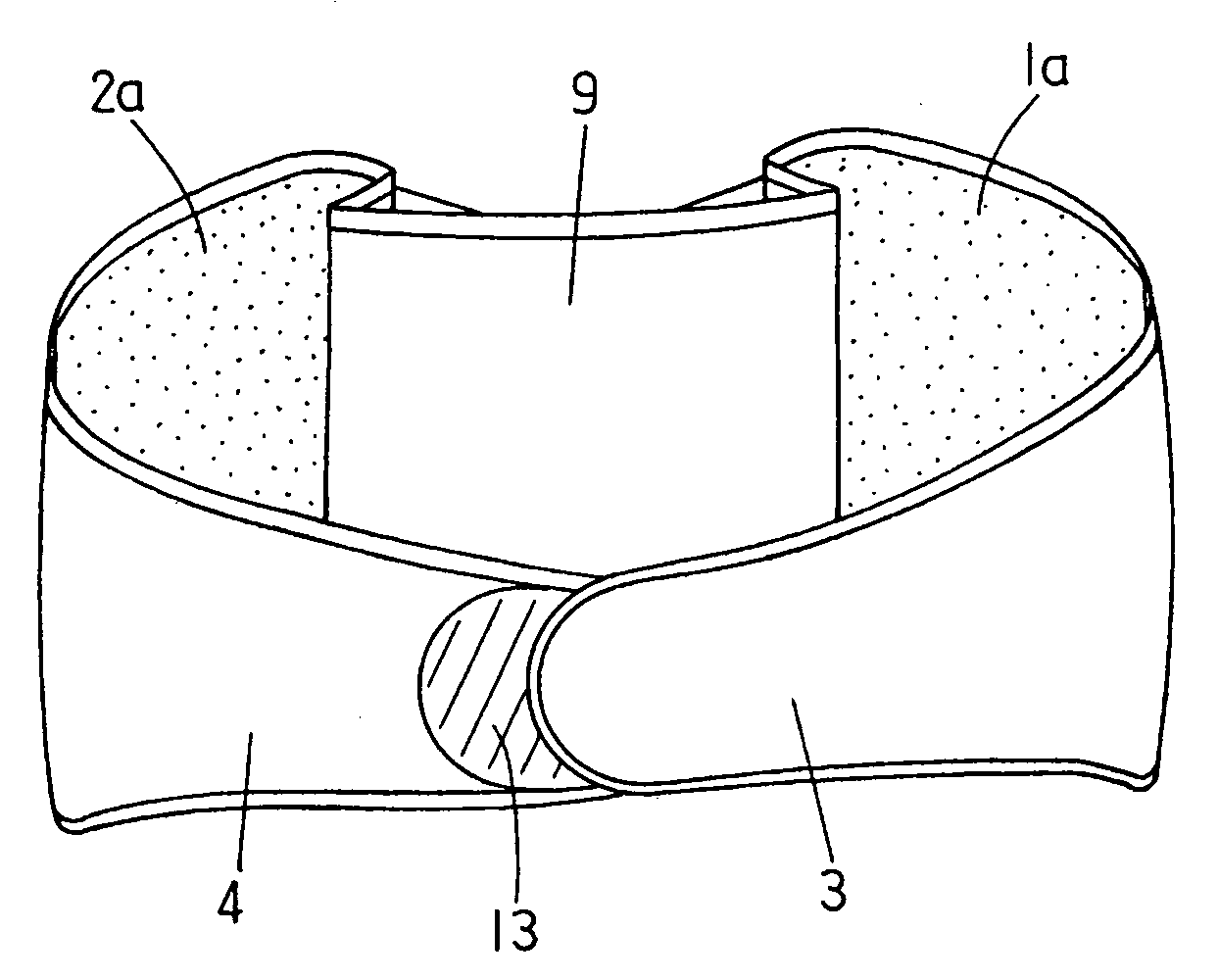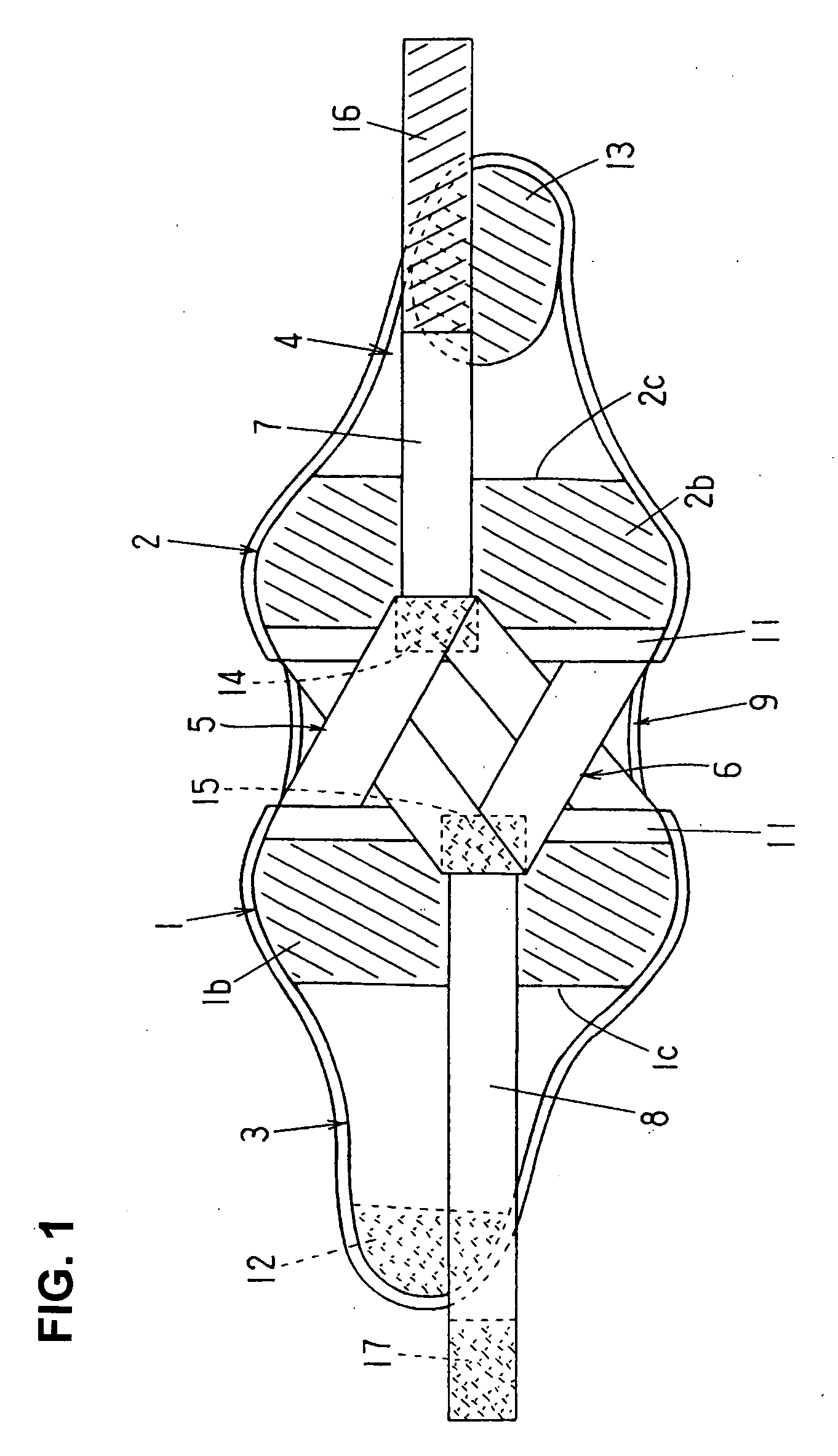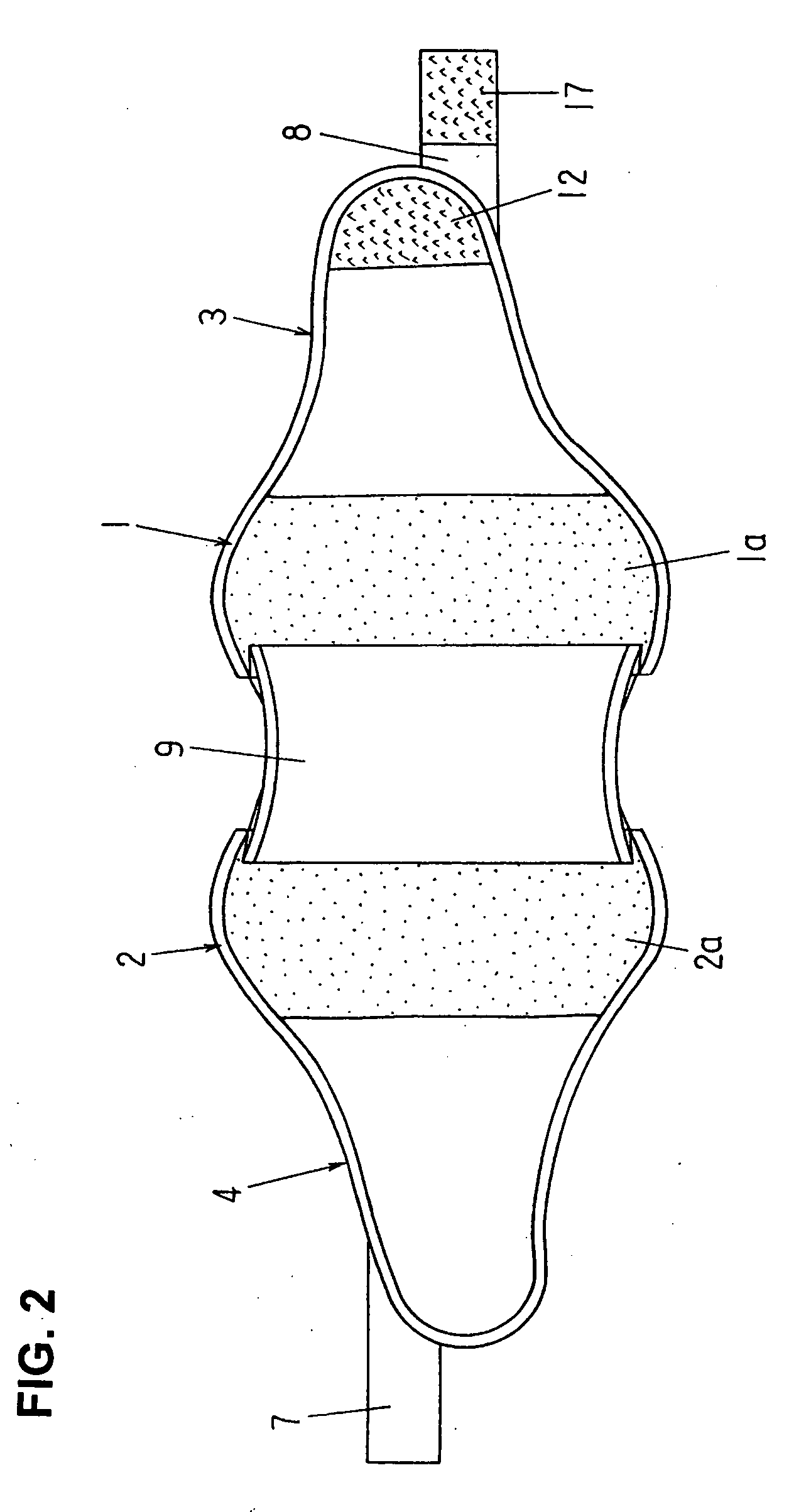Lower back supporter
a lower back supporter and support technology, applied in the field of new lower back supporters, can solve the problems of rash on the skin of the wearer, difficulty in handling, and difficulty in wearing tape, and achieve the effect of preventing slipping and being easy to wear
- Summary
- Abstract
- Description
- Claims
- Application Information
AI Technical Summary
Benefits of technology
Problems solved by technology
Method used
Image
Examples
Embodiment Construction
[0025]In the below, the lower back supporter of the present invention will be described in a more specific manner while referring to FIG. 1 through FIG. 10.
[0026]The lower back supporter shown in FIGS. 1 and 2 is comprised of a pair of anchor parts 1 and 2 arranged with a specified space in between and anchor belts 3 and 4 connected respectively to the anchor parts 1 and 2; and it is further comprised of a first support belt 5, which is connected to the anchor part 1 and brought to the anchor part 2 via the central back side of the lower back and fastened to the outer side surface of the anchor part 2, and a second support belt 6, which is connected to the anchor part 2 and brought to the anchor part 1 via the central back side of the lower back and fastened to the outer side surface of the anchor part 1. Operation belts 7 and 8 are respectively connected to the first and second support belts 5 and 6, and a connecting belt 9 is provided between the anchor parts 1 and 2 so as to conn...
PUM
 Login to View More
Login to View More Abstract
Description
Claims
Application Information
 Login to View More
Login to View More - R&D
- Intellectual Property
- Life Sciences
- Materials
- Tech Scout
- Unparalleled Data Quality
- Higher Quality Content
- 60% Fewer Hallucinations
Browse by: Latest US Patents, China's latest patents, Technical Efficacy Thesaurus, Application Domain, Technology Topic, Popular Technical Reports.
© 2025 PatSnap. All rights reserved.Legal|Privacy policy|Modern Slavery Act Transparency Statement|Sitemap|About US| Contact US: help@patsnap.com



